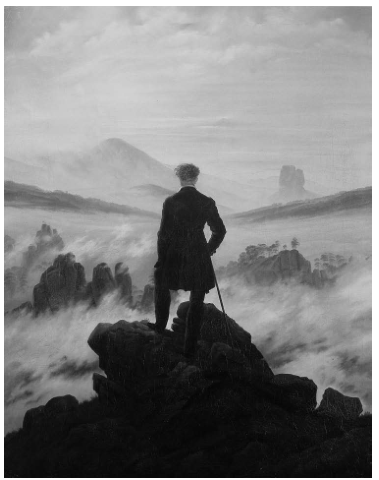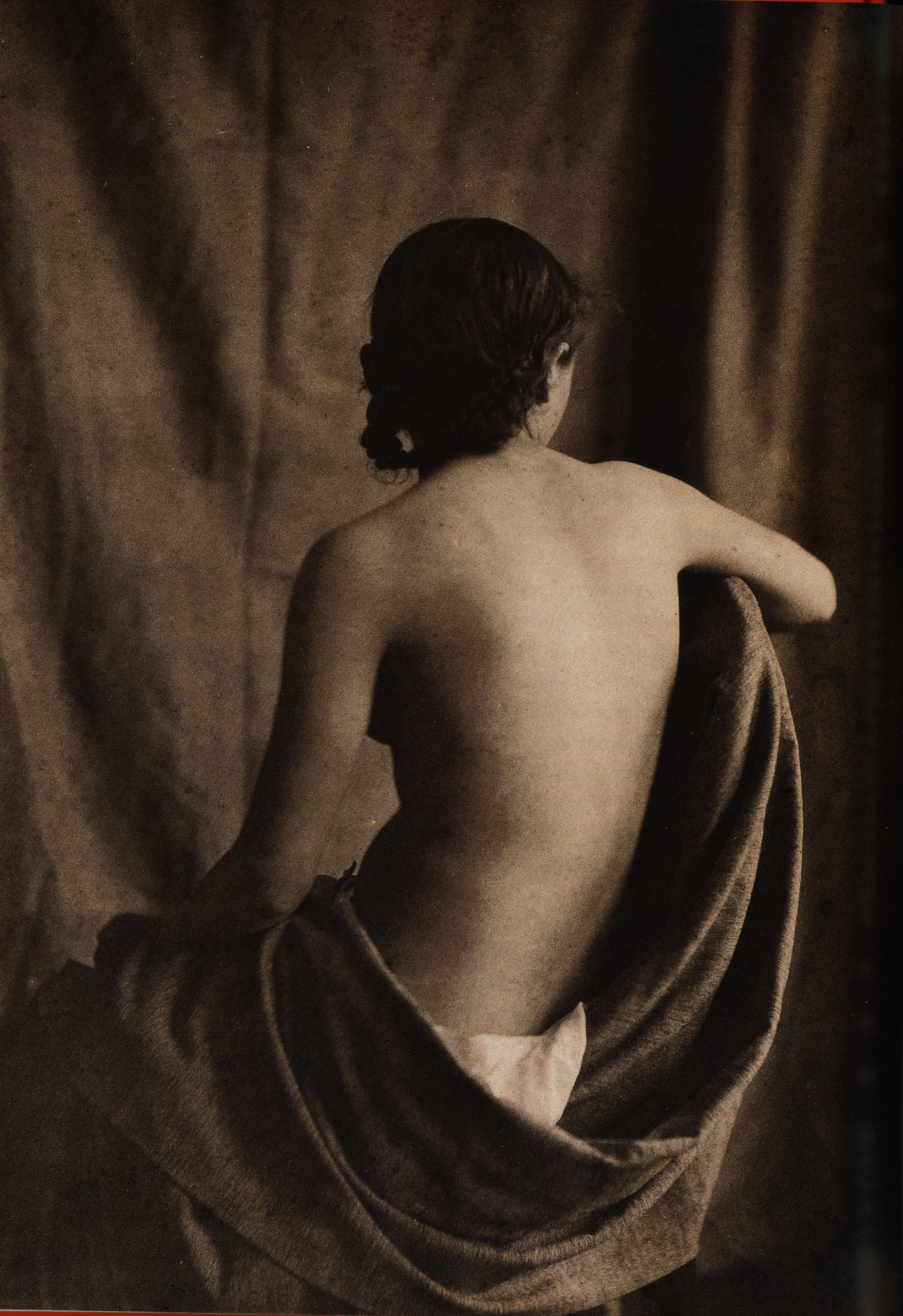 The Rückenfigur (literally “back-figure”) is a compositional device.
The Rückenfigur (literally “back-figure”) is a compositional device.
A person is seen from behind in the foreground of the image, contemplating the view before them, and is a means by which the viewer can identify with the image’s figure and then recreate the space to be conveyed. It is commonly associated with German Romantic painting.
The possession of a back — a side that can neither see nor be seen by the person to whom it belongs — literally pursues us all our lives.
These bodies’ enclosure creates what art historian Lionel Cust calls an atmosphere of “obscure import” and “mysterious significance”, the group of women cultivating “enigmatical meaning, which perhaps Dürer would alone be able to explain”1
“everything at a distance turns into poetry: distant mountains, distant human beings, distance events etc. all become Romantic”, wrote Novalis — yet our conditions of looking are also at a remove.
In the figure of Rückenfigur we feel ourselves late, and therefore estranged from the fullness of nature.
Friedrich’s paintings are strangely sadder and lonelier when they are inhabited by a turned figure than when they are empty.
The sublime occurs in the mind of the beholder and is not in the object that occasions its experience: (Kant)
I have already found between me and the picture, namely, the demand that the picture made upon my heart, and the loss that the picture inflicted upon me. And thus I was myself the Capuchin, the painting was the dunes, but that across which I should have gazed with longing – the sea – was altogether missing.

